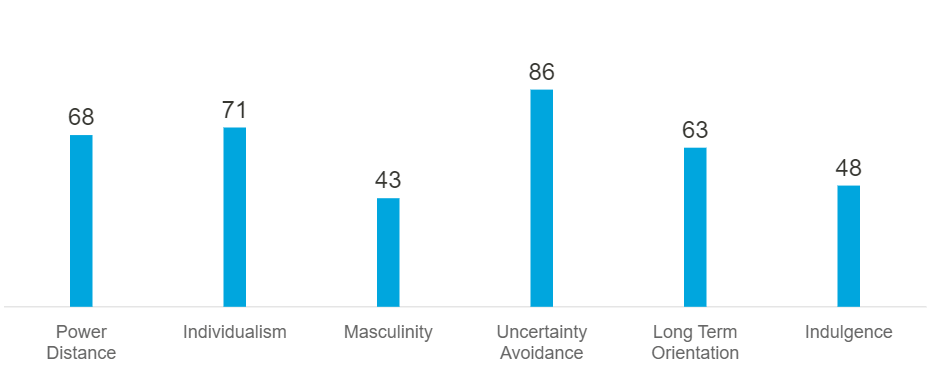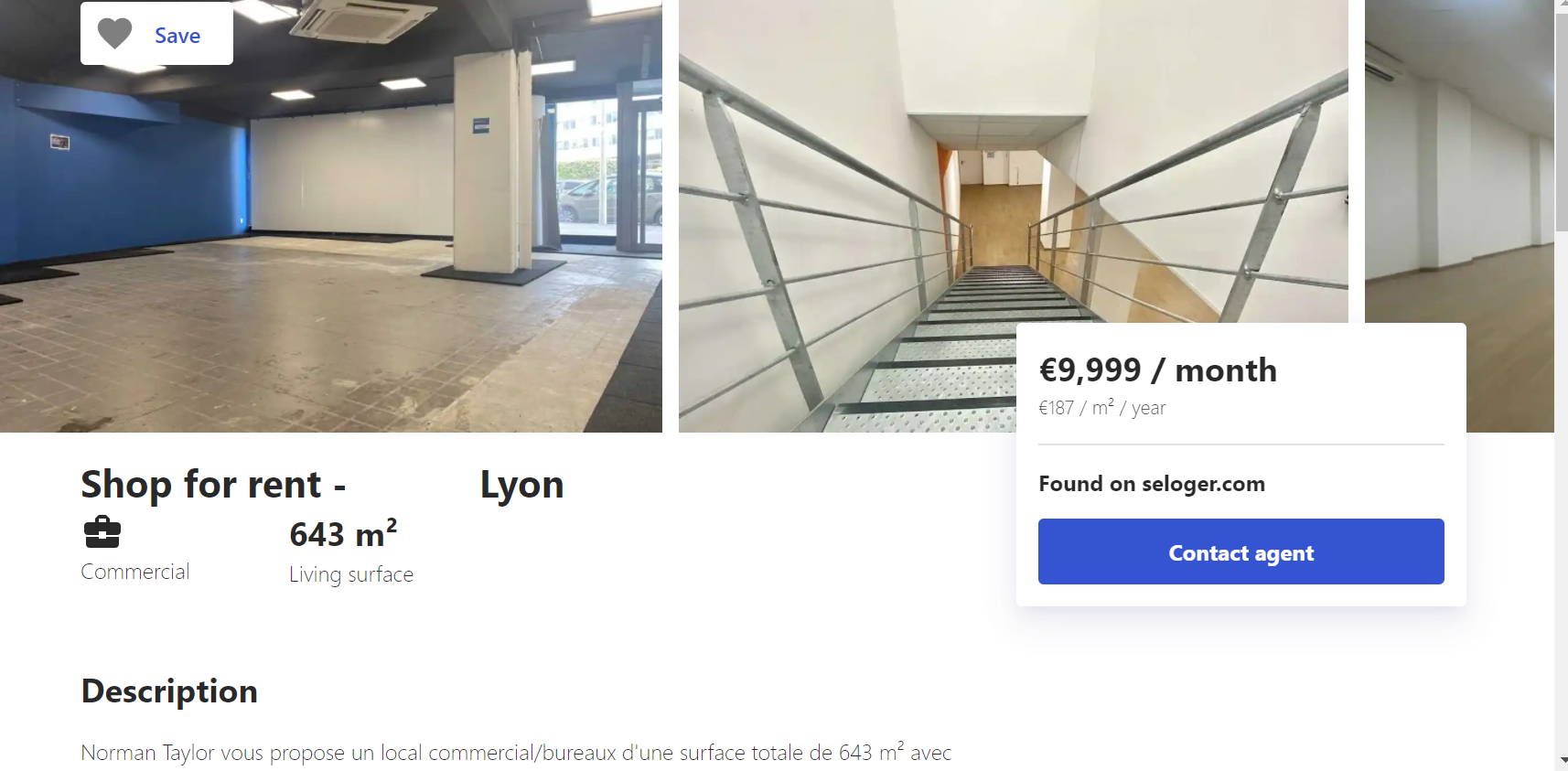Location
France, Paris and Lyon
Service
International marketing: market research, segmentation, targeting, positioning, marketing mix strategy, socio-cultural adaptation
Client description
European bicycle manufacturer selected us to help them expand internationally
Client turnover
+ 2 million euro (source: dnb.com – estimated)
Project description
The manufacturer chose the French market because of the French tradition of cycling, their culture and characteristic events such as the “Tour du France”.
In the first part of the collaboration we developed a country profile report and in the second part we developed the marketing plan itself.
Country profile analysis
This part helped us to better understand French consumers and how to target them. In addition to the general elements, we looked at the economic environment, macroeconomic indicators, trade trends and the socio-cultural environment.
For example, in analysing the socio-cultural environment, similar to the experience with the vegan meat producer in Germany, we considered: culture, needs, wants, attitudes, motivations, emotions and personality.
Thus, we used the 6 dimensions of French culture defined by Hofstede:

We then linked these characteristics of French culture with the research done by Marieke de Mooij on French promotion style as well as the research done by Jean-Claude Usunier and Julie Anne Lee.
Excerpts from our report:
Status is an important factor in the manifestation of power, while "older people are important because of respect for old age"
Marike de Mooij
We also defined the most important attractions and aesthetics of the French socio-cultural environment:
- la seduction
- le spectacle: theatre, drama
- l’amour: romantism, eroticism, desire, expression of affection
- l’humour: funny associations, playful use of words, humour.
Marketing plan
1. Initial analysis
The initial analysis helped us better understand the product, how we can promote it and what opportunities we can use in France to develop a competitive advantage.
1. Product characteristics
Here we included both tangible and intangible (intangible) characteristics:
Tangible characteristics analyzed:
- dimensions
- weight of the bicycle
- weight supported by the bicycle
- component parts and their country of origin
- bicycle accessories
- aesthetics (colours, design)
- the materials used to produce the bicycle
- the packaging used
Intangible characteristics analyzed:
- price
- brand reputation
- country of origin
- social status offered
- services offered by the manufacturer after the purchase of the product
- guarantees offered
- labelling
2. Product benefits
Based on the needs of the customers in relation to the product, we have analyzed which needs are met by our bike and to what extent.
3. SWOT analysis
- Strengths (Brand, Costs, Management, Number of products)
- Weaknesses (Past history, Financial results, Online visibility)
- Opportunities (Here we based on consumer needs that can be better addressed and recent trends in France)
- Threats (Substitute products, competitors and consumer perception)
2. Segmentation
We conducted demographic and behavioural segmentation by age, income and consumer cycling behaviour.
3. Targeting
Targeting consisted of choosing the segments we wanted to target in France.
At this point we had to consider the following:
- Size of market segments and growth potential
- Potential competition
- Feasibility and compatibility of our product with the consumer segments.
- The need to adopt a standardisation or product adaptation strategy
More specifically, we have chosen two main market segments: one that is similar to the market segment already targeted by the manufacturer, and the other consisting of a segment which is not properly targeted by any bike competitor in France, requiring the establishment of a new distribution channel in addition to those already practiced. This helped to increase the brand’s reputation and organic growth in visibility. This also led to the establishment of two different marketing mixes that differentially targeted the two consumer segments.
4. Positioning
Here we considered the needs of the chosen market segment to create an entire brand image connected to the needs of the customers.
Other aspects taken into account:
- Product attributes and benefits
- Quality and price
- End consumer
- Competition
Marketing mix
In the following we describe the choices made in relation to the marketing mix for only one of the two targeted segments:
1. Product
1. Type of product
We chose to adopt a product standardisation strategy in order to optimise adaptation costs because the product was suitable for the target market and consumers.
2. Guarantees offered
We adapted the guarantees offered to provide the best customer satisfaction.
3. Packaging and labelling
We also adapted the packaging and labelling to better address the needs and benefits required by consumers. Furthermore, we have taken into account French laws, for example Decree No. 2016-364 of 29 March 2016.
4. Branding
In the branding chapter, we have taken into account consumer culture and perception to propose a suitable brand strategy. We also chose the name under which we will launch the brand in France, making sure that there are no other similar brands in the European space.
5. Aesthetics/Design
The colours used and the design chosen for the website and campaigns were of particular importance in our campaign. Therefore, we paid particular attention to their choice in order to give consumers the best possible experience.
2. Price
By doing a financial analysis beforehand along with the analysis of competitors and the bicycle market in France, we decided to adapt the price according to the consumers we are targeting and the competition on the market. After adapting the price we adopted the “penetration pricing” strategy.
3. Place (Distribution)
One of the most important aspects of the marketing mix was distribution where we initiated both an omnichannel and peer-to-peer distribution strategy.
The omnichannel strategy was basically based on two physical locations in France alongside an online store with national delivery. Thus, we chose two cities based on several criteria where we rented two locations suitable for showroom (specialized bike shop) and storage:
- Paris – 146 square meters
Lyon – 646 square meters

It was also necessary to adapt the distribution channels so that they offer customers the best utility of place, time, form and information. So we organised the logistics process, design and strategies for the physical locations and the online store. Throughout this process we have taken into account research conducted by Euromonitor International which cannot be published due to terms and conditions, but will be listed below:
- Euromonitor International’s Voice of the Industry: Digital Survey, fielded in November 2020 – On the evolution of commerce in the coming years. Available here.
- Euromonitor International Voice of the Consumer: Lifestyles Survey, fielded in January and February 2021, On customers’ motivations when shopping in stores. Available here.
- Euromonitor Voice of the Consumer: Digital Survey, fielded March 2021, About the delivery features consumers prefer. Available here.
- Euromonitor International’s Digital Consumer Survey, March and April 2020, On consumers’ reasons for abandoning online shopping carts. Available here.
All of this was built on an omnichannel strategy that aimed to deliver a seamless customer experience whether customers came to a physical store or bought online. One of the important omnichannel strategies was giving the customer the option to try the product in the physical store and order it in the physical store for home delivery or to order it online and then pick it up in the store.
All bikes in the physical store have a mini-panel with information about the bike along with a QR code to the product page where they can see more information and order it at home. For online deliveries we have also organised instructions and video guides for assembling the bike. Online deliveries also benefit from customer-preferred delivery services including: fast and free delivery and notifications about order progress.
A completely different distribution strategy was adapted for the second target market segment.
4. Promotion
For the promotion strategy we had to adapt to the specificities of French consumers and we adopted a multichannel strategy based on online promotion, billboards, local and national press. (following Mark Ritson advices) Thus, we collaborated with a marketing manager in France to correctly implement 4 promotion strategies based on our previous research about the French promotion style.